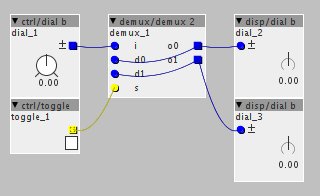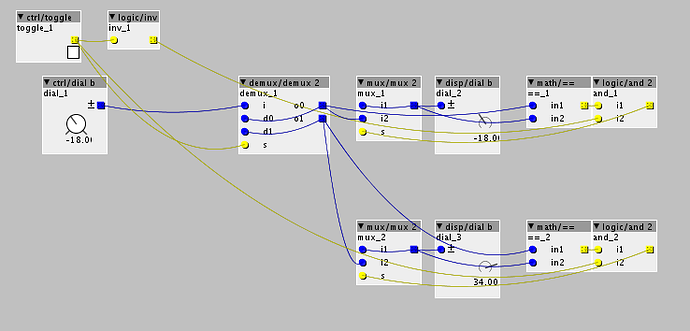Hello,
this is my first attempt to create a dial (controlled by CC) that send values to two different outputs using as few components as possible:

I use a demux to route the signal and the signal is sent back to the default params.
So, this works but with a limitation, when I switch the output, the new one gets the value of the previous.
I need to avoid this behaviour.
The best solution will be to keep the value on the new one until the dial reach it but also change the value only when I move the dial could be ok.
Does anybody could help me solving this puzzle? I spent a lot of time with no success...
Thanks!

